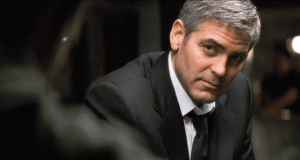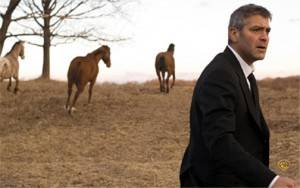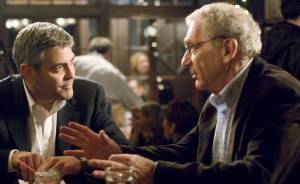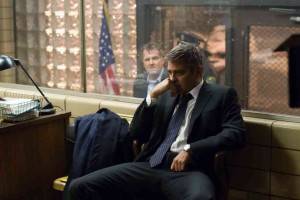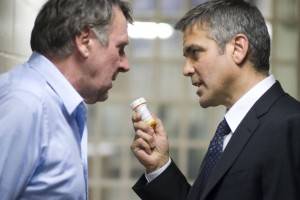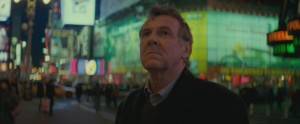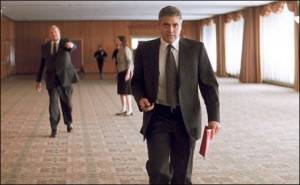Michael Clayton
Fresh from the success of furnishing the scripts for the extremely lucrative Bourne franchise, Tony Gilroy was given the rare opportunity to make his directorial debut with his own original screenplay Michael Clayton, an intricate, character-driven suspense story which finally confirms George Clooney to be one of the most distinguished screen actors of his generation.
Clooney plays the title role, a ‘fixer’ with a prestigious New York City law firm; he is an opaque figure who, as a former criminal prosecutor, is uniquely gifted at his job which usually involves finding legal loopholes exonerating high paying clientele from their dubious actions as typified by his late night call to a wealthy businessman (Denis O’Hare) who has just been involved in a hit and run accident.
You can tell from the opening moments of Michael Clayton that it’s going to be a thoughtful film, methodically paced but exceedingly tight, reminiscent of the conspiracy thrillers made by Alan J. Pakula (The Parallax View) or Sydney Pollack (Three Days of the Condor) in the 1970s. Not surprisingly Gilroy enlisted the help of Pollack who appears here, in one of his last roles in front of the camera, as Clayton’s boss and the firm’s senior partner Marty Bach.
Michael is a complex character with a history of gambling, he is currently in debt to a loan shark due to a failed restaurant venture with his drug-addicted brother and he is being put under great pressure to come up with the money. The firm are currently defending a class-action lawsuit filed against fictional pharmaceutical giant U-North and their leading attorney Arthur Edens (Tom Wilkinson) has a mental breakdown during a deposition, stripping off his clothes and declaring undying love for one of the key witnesses.
It transpires that Arthur has been diagnosed bipolar and it’s not the first time Clayton has been called in to salvage the mess caused by the disorder whilst he’s off his medication. U-North’s general counsel Karen Crowder (Tilda Swinton) has Edens put under surveillance and discovers that he’s in the possession of a report proving their latest product is carcinogenic and that he’s about to ‘go rogue’ and expose this publically just as they’re closing in on a settlement deal.
Michael Clayton is “total cinema” at its very best; woven of a semi-byzantine plot line and meticulously framed cinematography, steeped in the thought processes and actions of acutely convincing central characters, the usually buoyant Clooney really bares his soul in this film like no other, whilst Wilkinson and Swinton deliver unshakable supporting performances. In many ways it’s the antithesis of the Bourne movies yet despite lacking outright action sequences it still clutches audiences, bringing them to the edge of their seats.
I am gratified that I went to see Michael Clayton at the cinema when it first came out in 2007; I know I am amongst a minority who managed to catch it as it appeared on very few screens for only a brief stint. I am willing to go out on a limb and claim that in time it will likely be remembered as the film of its decade and I’m hopeful that the Blu-ray release will introduce it to a wider audience.
There is nothing flashy about the 1080p VC/1 transfer, the soundtrack is a standard Dolby Digital 5.1 mix and apart from an informative audio commentary from writer/director Tony Gilroy and his brother John, also the movie’s editor, there are no extras to speak of, no matter because Michael Clayton is exactly the kind of cinematic gem that doesn’t need a deconstructive light shined on it in order to be appreciated but rather should be wallowed into in the dark, with the comforting knowledge that from time to time they do make them like this anymore (sic).

